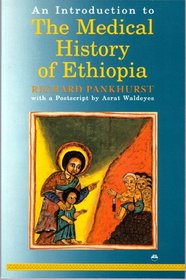Search -
An Introduction to the Medical History of Ethiopia
An Introduction to the Medical History of Ethiopia
Author:
Climatic Factors Ethiopia on many counts was geographically well situated. Normally, the climate of the highlands with its bright sunshine yet gentle heat is salubrious and invigorating, and two annual rainy seasons do much to cleanse the country of infection. The value of these rains impressed observers such as the Englishman Charles Rey, wh... more »
Author:
Climatic Factors Ethiopia on many counts was geographically well situated. Normally, the climate of the highlands with its bright sunshine yet gentle heat is salubrious and invigorating, and two annual rainy seasons do much to cleanse the country of infection. The value of these rains impressed observers such as the Englishman Charles Rey, wh... more »
ISBN-13: 9780932415455
ISBN-10: 0932415458
Pages: 288
Rating: 1
ISBN-10: 0932415458
Pages: 288
Rating: 1
5 stars, based on 1 rating
Publisher: Red Sea Pr
Book Type: Paperback
Other Versions: Hardcover
Members Wishing: 0
Reviews: Amazon | Write a Review
Book Type: Paperback
Other Versions: Hardcover
Members Wishing: 0
Reviews: Amazon | Write a Review
Genres:
- History >> Africa >> Ethiopia
- Nonfiction >> Social Sciences >> Sociology >> General
- Medicine >> General




